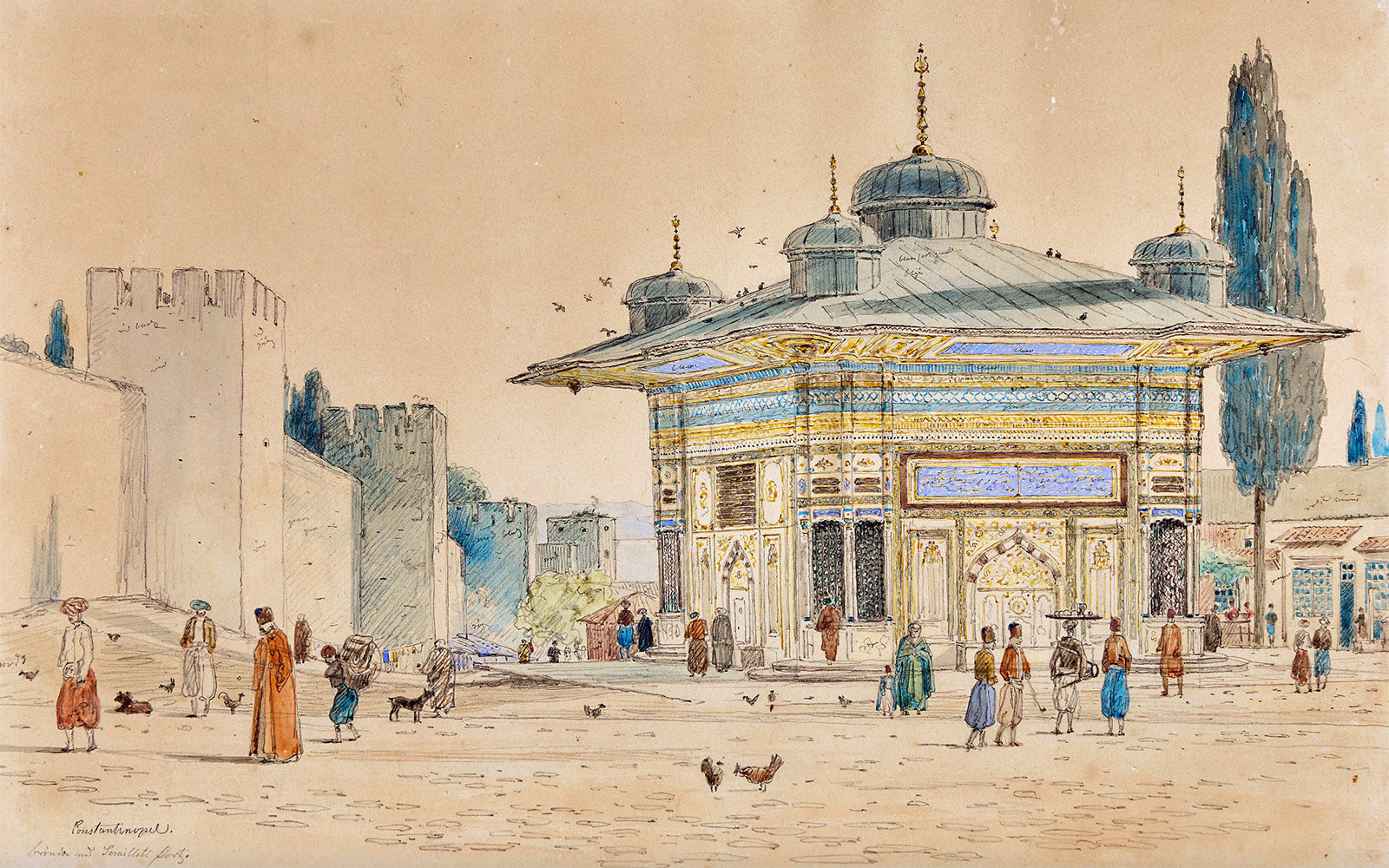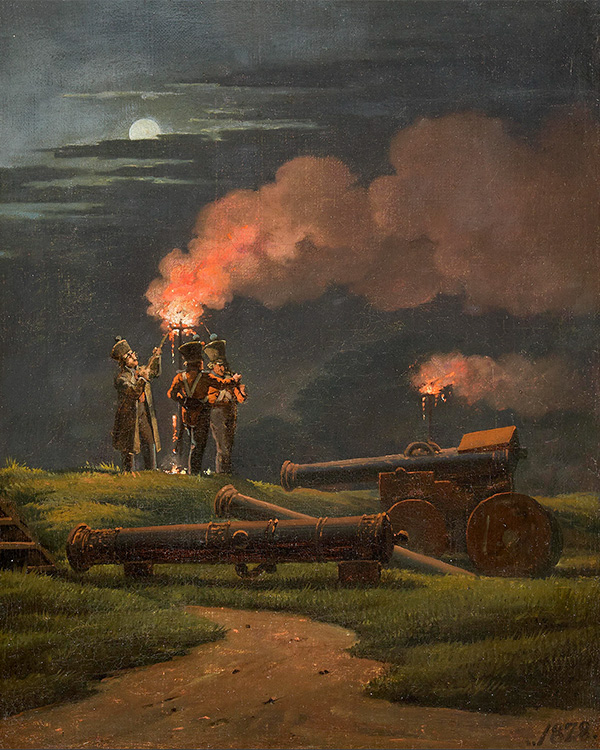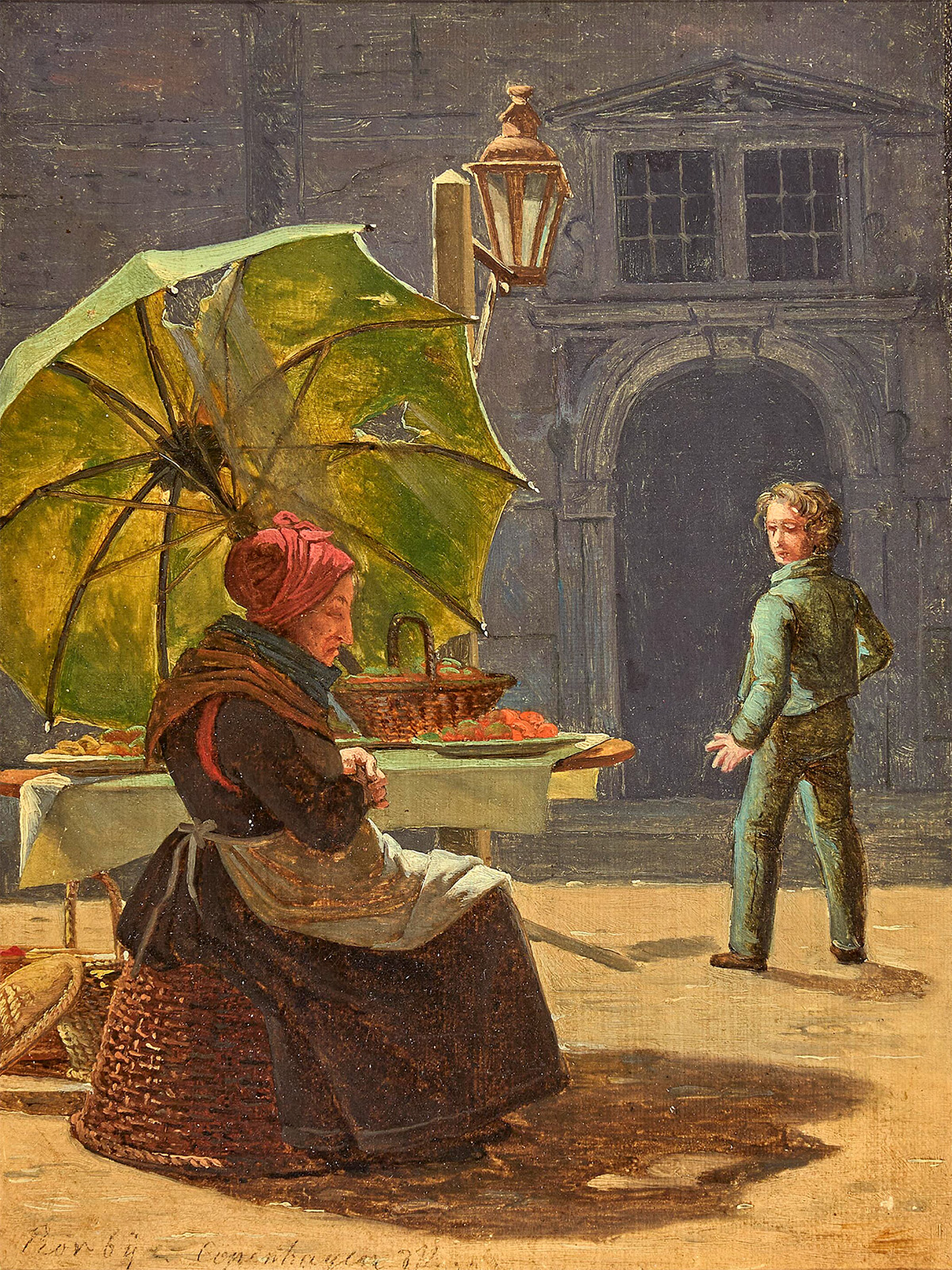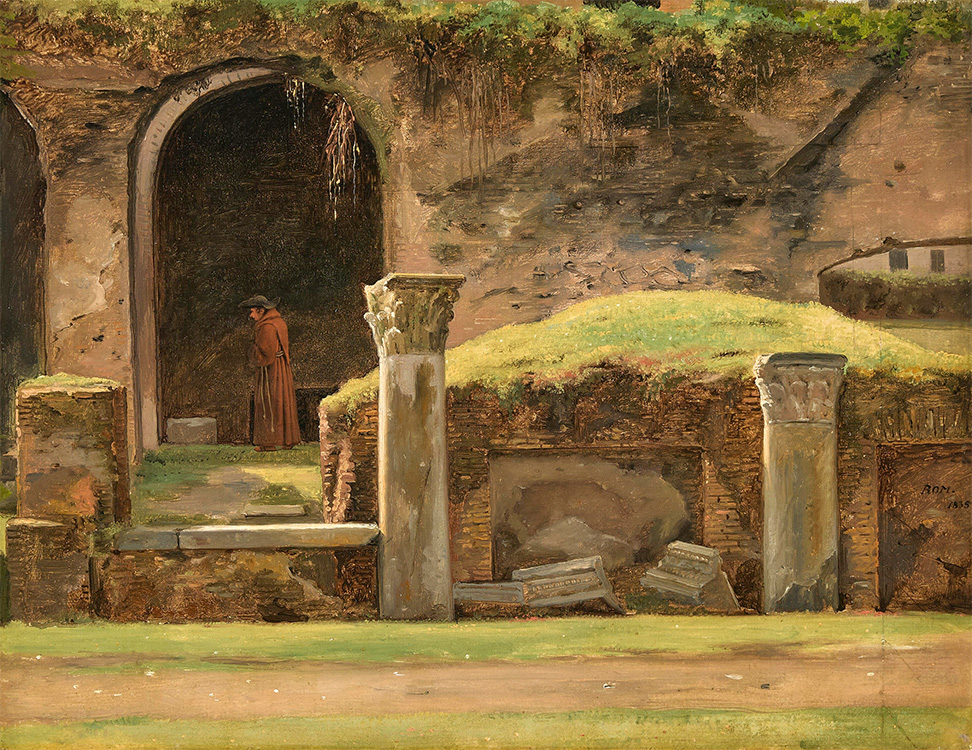Martinus Rørbye – from the Citadel to Constantinople
Martinus Rørbye is one of the most central artists of the Danish Golden Age. His work embodies the era’s outlook and longing for travels. At our major autumn Live Auction, we present his artworks from 1820s Denmark and from his extensive journey abroad in the 1830s.
On 30 October at 6.30 pm during the Live Auction and a subsequent Online Auction on 3 November at 6 pm, the focus is on the Danish Golden Age – a period framed by a series of major political and economic crises between 1801 and 1864. Despite these challenges, the intellectual and cultural life flourished like never before, with artists striving to rebuild national identity based on Danish nature and urban life. Today, the Danish Golden Age is regarded as one of the most significant art scenes of 19th-century Europe.
Wanderlust in the Golden Age
Azure blue seas, sunlit architecture, and picturesque folk life. While patriotism and the reconstruction of national identity were prominent themes, artists of the period also sought inspiration through travelling. Many journeyed to Southern Europe to deepen their understanding of foreign cultures, study ancient treasures, and discover new motifs among picturesque rural scenes. Rome was the cultural hub of the arts and favourite destination, and with the transportation of the time, these journeys were demanding and often lasted several years.
|
|
Rørbye’s CopenhagenMartinus Rørbye (1803–1848) was educated at the Royal Danish Academy of Fine Arts. His early artworks often depict motifs from Copenhagen, and at the Live Auction, we present a distinctive moonlit and fire scene from The Citadel. The occasion for the torch-lit event was the wedding of Prince Frederik and Princess Vilhelmine Marie in 1828. The following year, Rørbye painted the motif from Børsen (the Stock Exchange), highlighting the city's lively everyday life. Here, a so-called “Amager woman” is seen taking a nap under a parasol, while a young man gazes longingly at the fruits in her stall. |
Travel with RørbyePatriotism and depictions of domestic everyday life were not the only passions fueling Rørbye’s pursuits. He was among the Golden Age artists with the greatest wanderlust. In 1834, he embarked on an extensive journey southward – visiting Paris, Rome, Greece, and Athens – and as the only artist of his contemporaries, he travelled all the way to the Ottoman Empire, specifically to Constantinople in Turkey. Rørbye had an unusually keen interest in people from all social strata for his time. His sketchbooks meticulously depict the inhabitants of these foreign lands with great empathy and detail – whether architecture, furniture, fruits, costumes, or animals. He also recorded his thoughts about these new places in his diaries, which remain some of the best sources for artist travels during the period. |
|
|
"(…) Finally, the day revealed Constantinople to me in all its grandeur; it truly deserves its great name. It was like a new world – astonishing and fantastic."
Martinus Rørbye, diary from 1836
|
|
Glimpse of Rome and ConstantinopleDuring his long journey, Rørbye arrived in Rome in October 1834. He described experiencing moments of illness and homesickness, yet he managed to paint the extraordinary view of the Colosseum, focusing on architectural details, the green foliage, and a monk lost in thought. |
In December 1835, Rørbye reached Constantinople with his travel companion, architect M.G. Bindesbøll. The auction features the drawing " The Well at the Gate of the Seraglio, Constantinople" offering a glimpse of this colourful city under the open sky. Figures and motifs from Rørbye’s travels often found their way into his later refined oil paintings. The offered drawing is a study for the painting "The Fountain at St. Sophia Square by the Serail Gate in Constantinople" from 1846, which today is part of the ARoS collection.
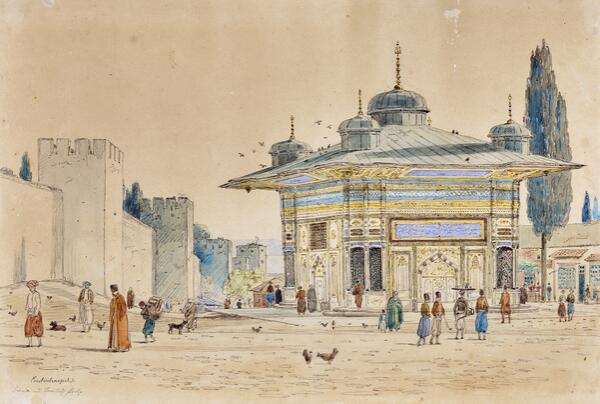
Want to know more? Contact our specialist:
|
|
Julie Arendse VossJulie Arendse VossHead of department / 19th Century & Old Master Paintings / København |
